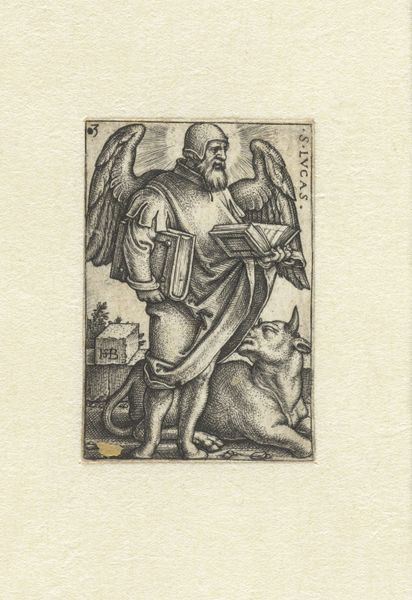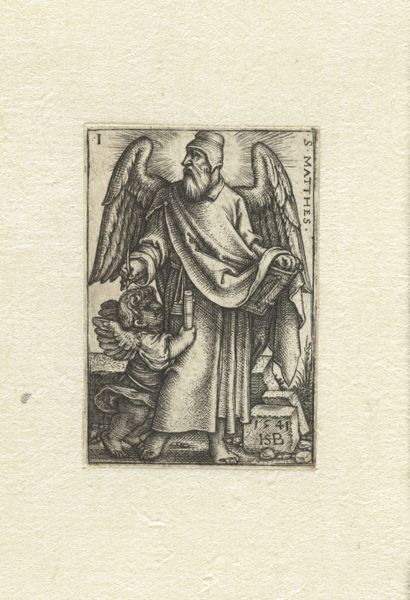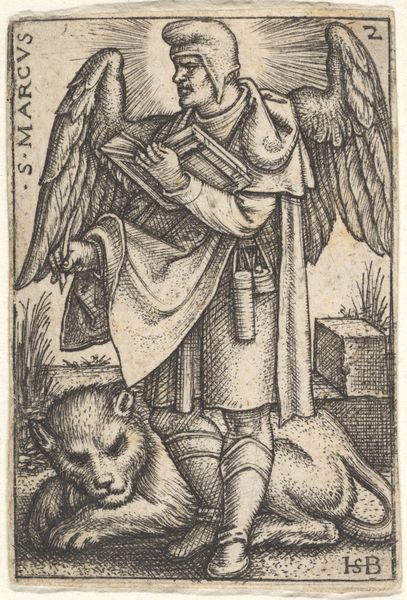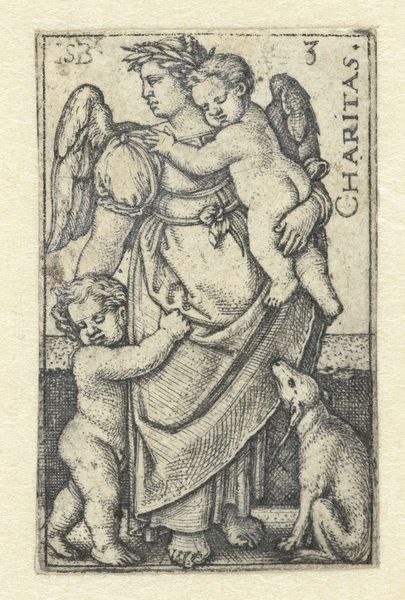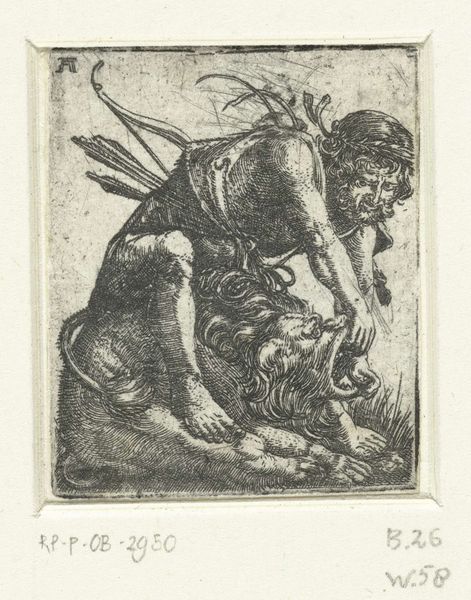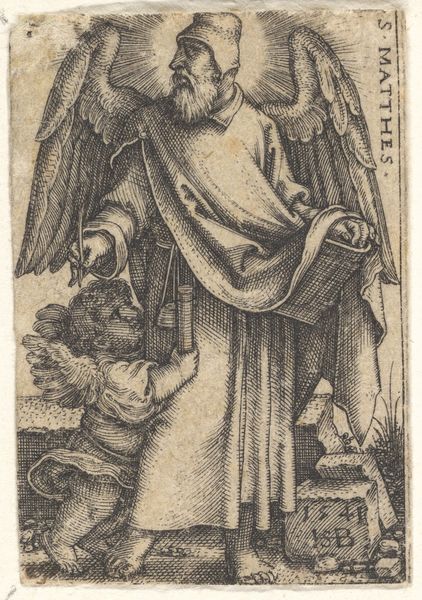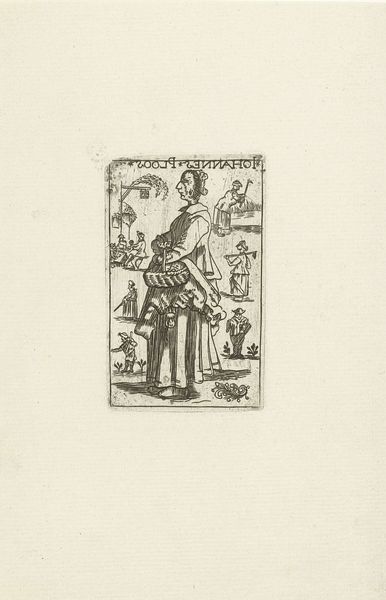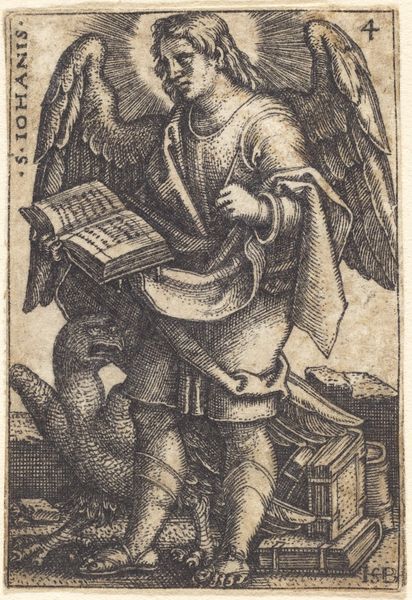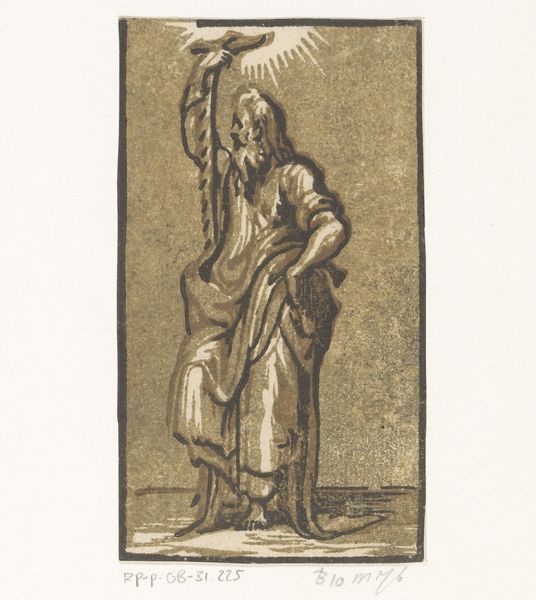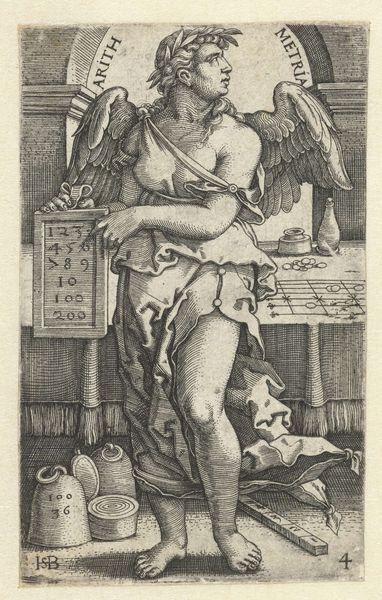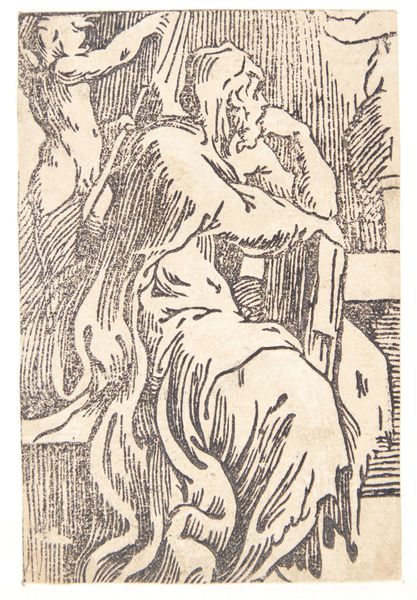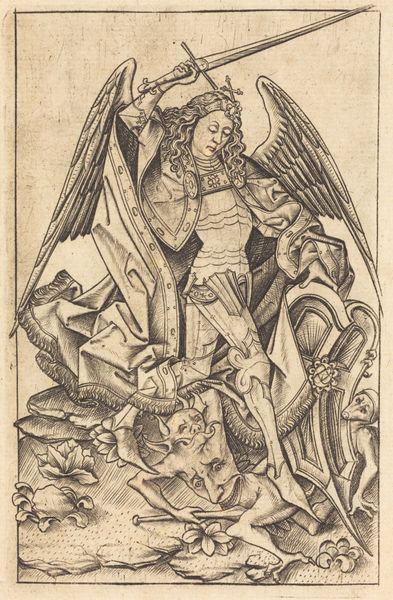
print, engraving
# print
#
old engraving style
#
figuration
#
line
#
history-painting
#
northern-renaissance
#
engraving
Dimensions: height 43 mm, width 29 mm
Copyright: Rijks Museum: Open Domain
Curator: Hello and welcome. Today, we're looking at "Marcus," an engraving dating back to 1541 by Sebald Beham. It's a small print, but its details are captivating. Editor: It strikes me immediately as possessing an eerie grace. The stark contrast between the figure and the background creates a haunting quality, almost as if it's a memory etched onto the surface. What do you see in the composition? Curator: Well, Beham, a prominent figure of the Northern Renaissance, displays masterful command of line and texture here. Look at the subject: the figure of Saint Mark, the evangelist, identified by his symbol, the winged lion, which he is posed above. See how Beham renders form through meticulous hatching and cross-hatching? It is also a work steeped in symbolism. Editor: Symbolism, of course. And speaking of, how the heck did that winged lion get mixed up with Mark, anyway? Do you think Beham would have even been asking those same questions about what constitutes "acceptable" iconography, back in his day? Curator: Haha, likely! The connection's complex, steeped in early Christian interpretations of scripture and symbolic representation. But also: yes! Artists were absolutely riffing off earlier versions of iconographies all the time—that's often how stylistic conventions themselves were set. I think Beham uses the established visual language while adding his unique perspective and personal style. You sense a certain quiet dignity in the subject's presentation that diverges from the standard visual portrayals of sainthood, no? Editor: Definitely. I love that tension. I find myself returning to that stark contrast, too. I almost wish there was less information given to me about how the thing "means", though, and that I could linger a bit more in what it just _does_, and how the artist did that. It reminds us that even in apparently straightforward representational works, so much lies beneath the surface, waiting to be discovered—or just felt! Curator: Precisely. Ultimately, "Marcus" stands as a beautiful example of how an artist can capture the spirit of the age through detailed observation, technical virtuosity, and thoughtful, perhaps even daring, iconographic choices. Thank you for joining me. Editor: A pleasure. Don't let the lions bite!
Comments
No comments
Be the first to comment and join the conversation on the ultimate creative platform.
